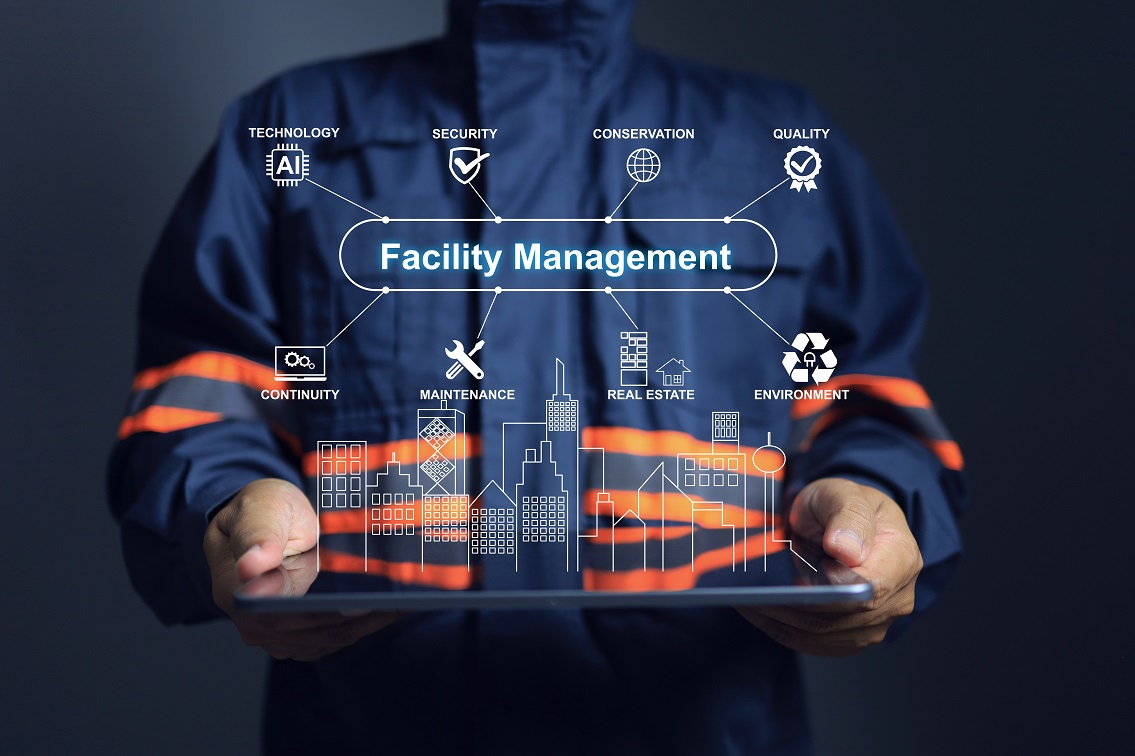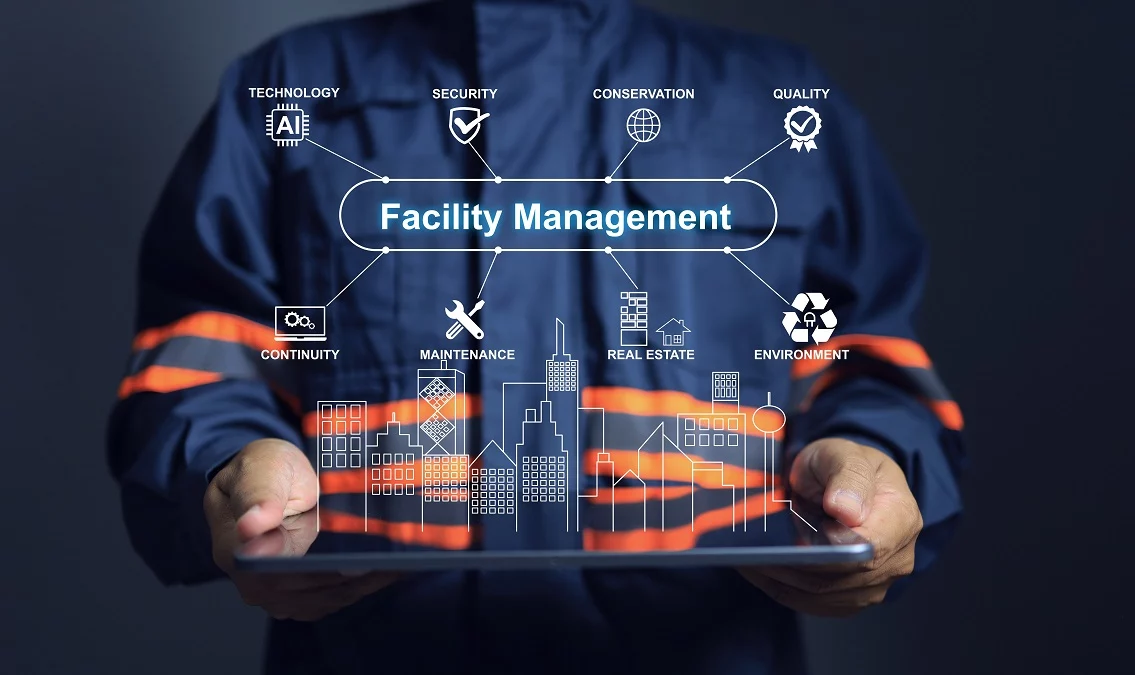Trick Patterns Forming the Future of Center Monitoring in 2024
As we look in advance to 2024, the landscape of center management is positioned for significant change, driven by numerous vital trends. The integration of wise building modern technologies and a change towards data-driven decision-making guarantee to improve functional performance while focusing on sustainability in practice.
Smart Building Technologies

Smart building technologies encompass a vast variety of systems, including intelligent lights, cooling and heating controls, and safety systems. By integrating these systems, facility managers can check and change parameters in real-time, bring about considerable reductions in power waste and operational costs. Smart sensing units can spot tenancy levels and readjust illumination and temperature as necessary, making certain that power is just utilized when necessary.
Furthermore, these innovations facilitate improved information collection, enabling organizations to track use patterns and determine opportunities for more improvements. The execution of smart structure innovations not just adds to sustainability goals yet also develops healthier work environments that can increase worker performance and contentment.
As we relocate right into 2024, the fostering of clever building innovations will likely increase, reflecting a wider change in the direction of more intelligent, receptive, and lasting facility management methods.
Data-Driven Choice Making
Increasingly, organizations are leveraging data-driven decision making to boost center management practices. By taking advantage of information analytics, facility managers can acquire actionable understandings that dramatically enhance functional efficiency and resource allowance. The assimilation of innovative modern technologies, such as IoT sensing units and real-time surveillance systems, enables the collection of large amounts of information on building efficiency, tenancy prices, and power consumption.
This wealth of information permits facility supervisors to determine patterns, anticipate upkeep demands, and proactively address problems before they intensify. For circumstances, anticipating analytics can anticipate devices failings, minimizing downtime and fixing expenses. Furthermore, data visualization tools facilitate better interaction amongst stakeholders, making certain that educated choices are made collaboratively.
Additionally, data-driven techniques improve calculated preparation by allowing facility managers to assess the effectiveness of present techniques and make informed choices relating to investments in technology or framework. As companies increasingly focus on operational excellence, data-driven choice making is poised to end up being a keystone of successful center administration approaches in 2024 and past. Eventually, the ability to utilize information efficiently will empower companies to create more reliable, efficient, and resistant centers.
Sustainability and Green Practices
The focus on data-driven decision making normally lines up with the growing emphasis on sustainability and green techniques within facility monitoring. As organizations increasingly focus on environmental duty, center managers are leveraging analytics to enhance resource use, reduce waste, and minimize carbon impacts. This calculated approach allows the integration of energy-efficient systems, such as LED illumination, smart cooling and heating controls, and eco-friendly energy resources into center procedures.
Additionally, the implementation of sustainable techniques extends past energy consumption. Center managers browse around this site are promoting and embracing green products recycling efforts to develop a circular economic climate within their centers. This not only improves the ecological account of the organization however additionally fosters a culture of sustainability among employees.
Conformity with environmental policies is another crucial aspect driving the fostering of environment-friendly practices. By utilizing data analytics, center managers can keep track of conformity metrics and identify locations for renovation, ensuring adherence to global and neighborhood sustainability requirements.
Hybrid Work Designs
A substantial change in the direction of crossbreed job designs is reshaping the landscape of center monitoring in 2024. This standard incorporates in-office and remote work, demanding a reevaluation of space utilization, resource allotment, and worker interaction strategies. Organizations are significantly identifying the relevance of adaptable workspaces that accommodate diverse requirements and preferences.
Facility managers have to adapt by carrying out versatile workplace styles that sustain collaborative wikipedia reference initiatives while supplying areas for concentrated job. This includes the combination of technology to assist in smooth communication and cooperation among in-office and remote staff members. Smart structure services, geared up with analytics and sensors, permit real-time surveillance of area usage, enabling organizations to optimize their atmospheres successfully.
In addition, hybrid job models highlight the need for efficient center administration that focuses on worker experience. In significance, the hybrid work model is revolutionizing facility monitoring, urging an aggressive strategy to fulfill the progressing demands of the workforce.
Improved Passenger Health
As organizations embrace hybrid work versions, an enhanced concentrate on passenger wellness is becoming indispensable to center administration approaches. Facility Management. This shift identifies that a satisfied and healthy workforce directly influences efficiency and retention rates. Center supervisors are now prioritizing settings that promote physical and psychological wellness, integrating components such as natural lights, biophilic layout, and easily accessible wellness resources

Innovation plays a critical role in this development. Smart structure systems can check ecological variables and change setups in real-time, making certain optimal comfort levels - Facility Management. In addition, responses systems, such as tenancy sensing units and employee surveys, allow center managers to consistently refine wellness efforts based upon owner demands.

Conclusion
In 2024, the future of facility management will certainly be dramatically affected by the combination of smart building innovations and data-driven decision-making, cultivating enhanced operational efficiency. Sustainability initiatives will certainly prioritize environmentally friendly practices, while the appearance of crossbreed work models will certainly require flexible workplace layouts. An increased emphasis on passenger wellness through innovative Cooling and heating systems and biophilic style will add to healthier job environments. These fads collectively highlight the evolving landscape of center management in feedback to contemporary obstacles and opportunities.
Center supervisors are promoting and embracing eco-friendly materials reusing campaigns to produce a circular economic situation within their facilities.A significant shift towards crossbreed work designs is reshaping the landscape of facility monitoring in 2024.In addition, hybrid work designs emphasize the need for efficient additional hints center monitoring that prioritizes employee experience.As organizations accept hybrid job versions, a heightened focus on resident wellness is ending up being indispensable to center management techniques.In 2024, the future of facility administration will certainly be dramatically affected by the assimilation of smart building technologies and data-driven decision-making, fostering enhanced operational performance.